If so, you could be suffering from medial compartment osteoarthritis (OA).
Read on as our physios explain what it is, why you get it, and what you can do to help yourself.
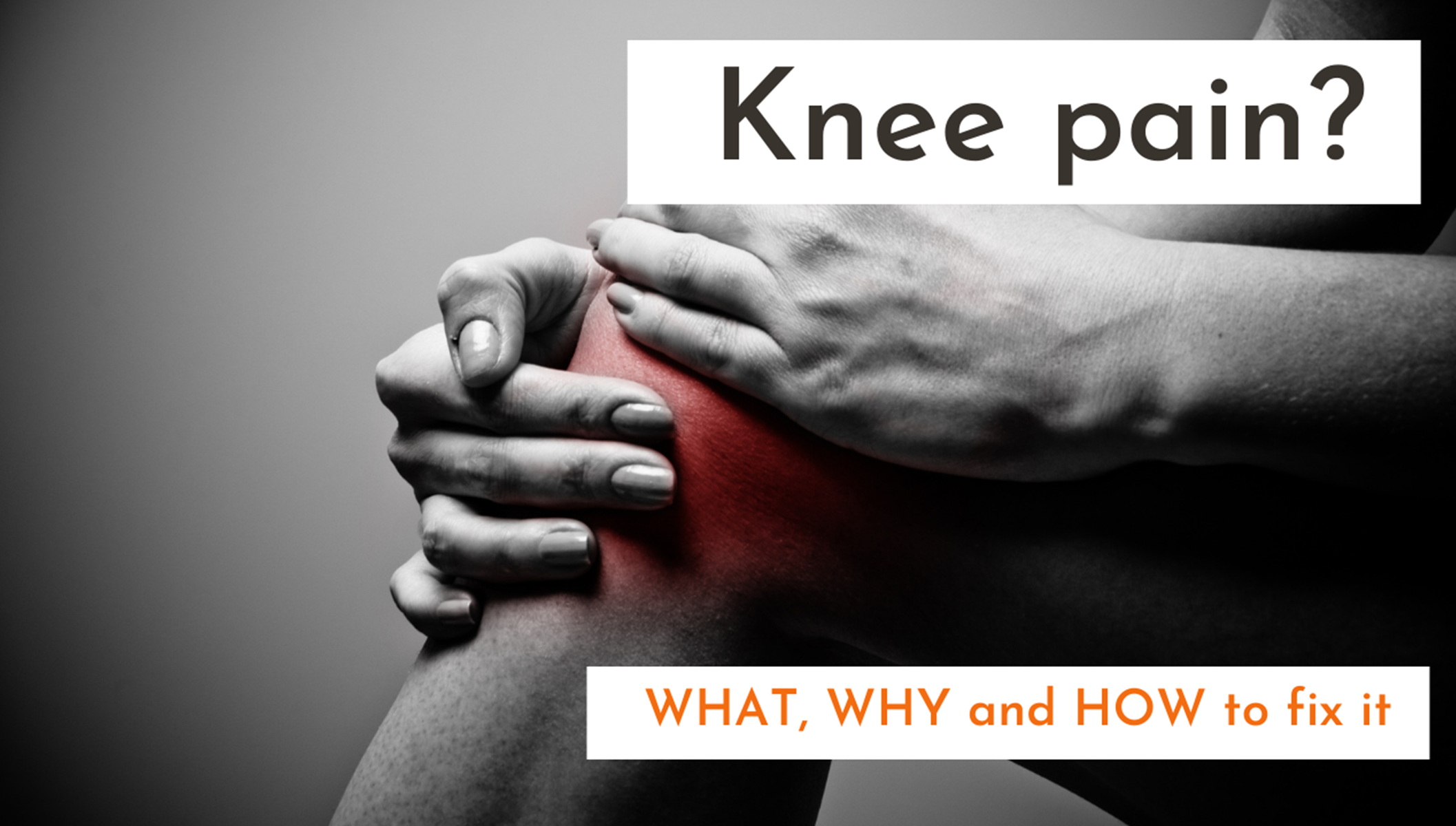
If so, you could be suffering from medial compartment osteoarthritis (OA).
Read on as our physios explain what it is, why you get it, and what you can do to help yourself.
What is it?
Medial compartment OA is a type of osteoarthritis that affects only one part of the knee: the medial compartment. There are three compartments that make up the knee and the medial compartment is near the middle of the knee, on the inner side.
Why do people get it?
Generally, this condition is seen in the 40+ age population as it is a condition that builds cover time. It is associated with excessive loading either through poor mechanics or stability in the limb affected.
The classic symptoms are pain in the inside of the knee and associated during and after weight-bearing tasks such as walking.
In advanced cases, the pain will be noted after activity and into the evening, and during sleeping. People can also complain of difficulty having one leg on top of the other when lying in bed.
Other symptoms are difficulty squatting down, stiffness in the morning, and a gradual loss of movements into the knee.
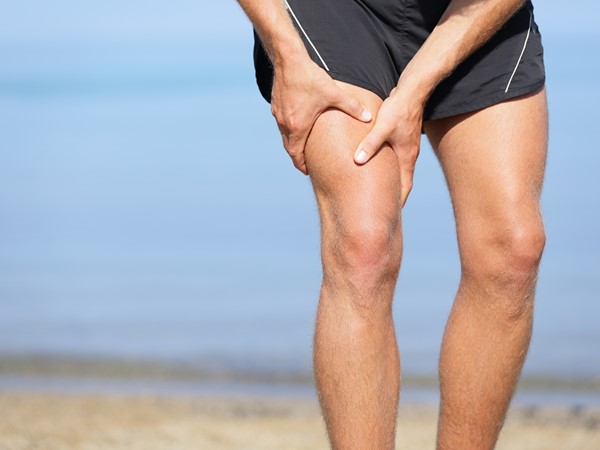
Why?
Poor mechanics predispose extra load and weight of the body into the inside of the knee. This can arise from different foot posture types (generally a flat foot posture) and well as a lack of strength and stability of the large muscles around the hip and knee.
Equally, early onset of OA can happen after injuries such as cartilage tears or ligament injuries from sports.
Early Advice
If the symptoms are extremely severe, early interventions of a steroid injection into the space can help settle down the symptoms.
Avoid movements that cause pain to break the cycle of pain and inflammation.
In all situations, addressing the limited movements of the knees, strengthening key muscle groups, and breaking down the cycle of stiffness and pain is important.
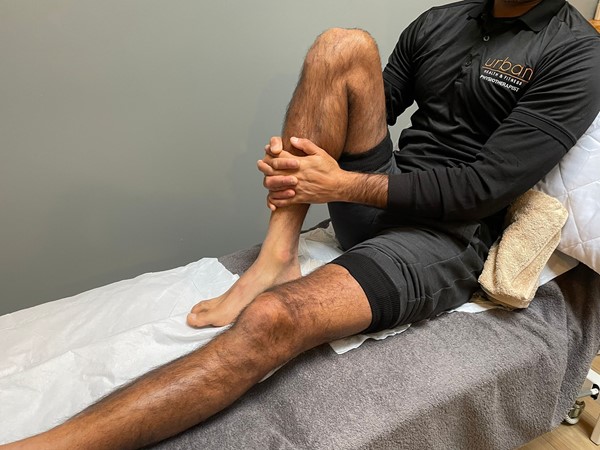
Technique: In sitting bend the affected knee up towards the chest and aim to hold the knee at the end of the movement between 10-15 seconds.
Top tip: Compare the movements between each leg to see if there is a significant difference in the range of movements and to gauge any progress in the exercise.
Technique: A progression from the first exercise is to use a small towel between the knee when bending upwards.
Gently squeeze/hold the knee at the end of the movement. This helps to gap the inside of the joint slightly and give a nice stretch to tight structures around the knee.
Top Tip: Avoid using a large towel as this will block the movement.
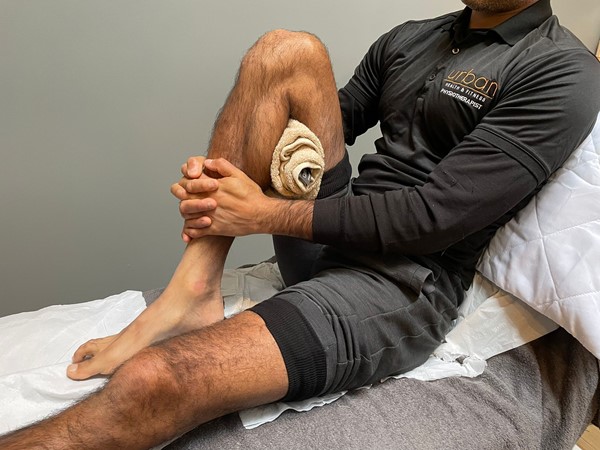
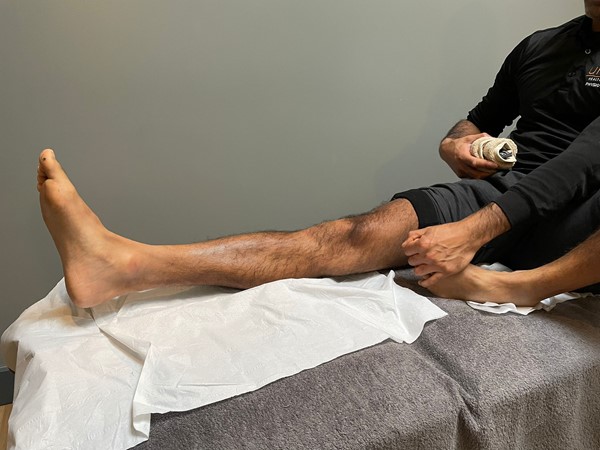
Technique: Extend the affected leg out. Tighten the thigh muscle as extend the leg up as much as possible. The shin bone may lift up off the bed and move into hyperextension. All movements should be done in pain-free ranges.
Perform 45-60 seconds and increase time and sets as pain allows.
Top Tip Limited hyperextension is common among people with OA changes in the knee. Avoid forcing the knee up and into any painful movements. Look to ensure you focus on activating the quads muscles and holding between 8-10 seconds.
Technique: Using a towel under the ankle of the affected side, complete the last exercise whilst trying to lower the knee down into the bed. This exercise encourages movement into areas of the knee that may be limited and needs movement to be restored.
Perform 8-12 reps. Begin with 1 set and increase as you become more confident with the exercise.
Top Tip If the towel is too big, it can be painful for the knee to drop into such a big space. Start with folding the towel and building up the height under the ankle.
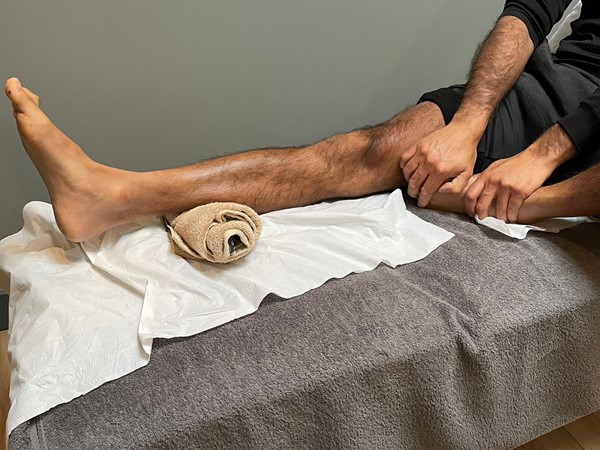
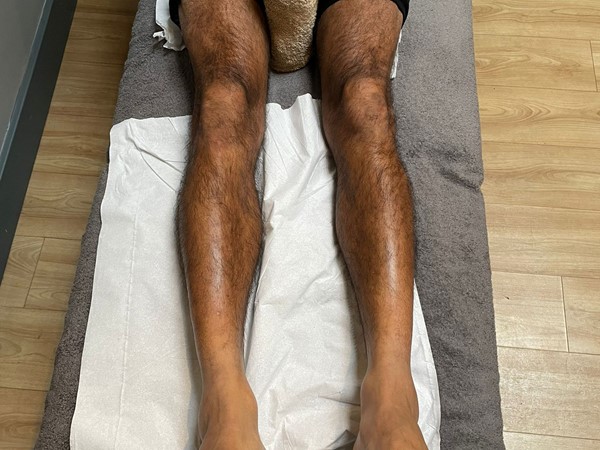
Use the towel and place it between the knees. Tighten the quad muscles up on both legs and squeeze the towel together.
Top Tip When squeezing together, avoid rolling the knees together but focus on squeezing them together. You may notice the affected leg is harder to engage the muscle group.
Functional exercise in standing. If you have an elastic band, place it around the knees (this helps to activate more muscles around the hips). From a sitting position, have knees, hips, and toes all in alignment. Lean forwards, push through the heels, and stand tall. Gently reserve the movements but lower yourself slowly down to the bed or chair.
Complete 45-60 seconds, start with 1 set, and increase as you become more confident with the exercise.
Top Tip Perform your sit to stand movements at different surface heights (different chairs/sofas) as this will challenge the muscles into different ranges.
Medial Compartment OA Exercise Sheet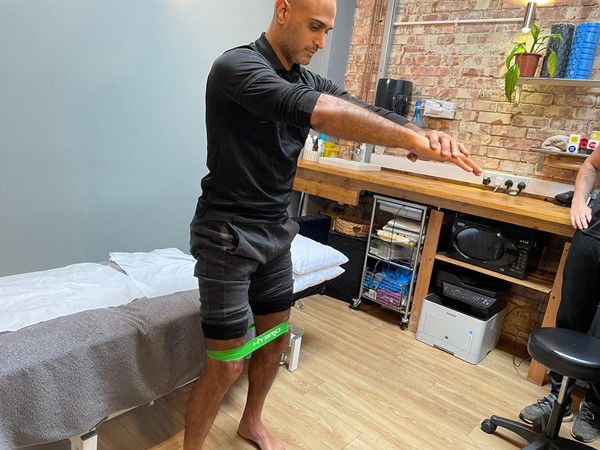
In many situations, this condition is linked to how the knee, hips, and pelvis move, and therefore other types of techniques and treatments can be effective in helping to speed up the recovery period. These include:
The above exercises are recommended for symptoms of medial compartment OA. In all circumstances, having a thorough assessment to determine the likely cause of your problems is recommended. If you are unsure about your symptoms seek the guidance of your doctor or speak to a member of the Urban therapy team with any questions you may have.